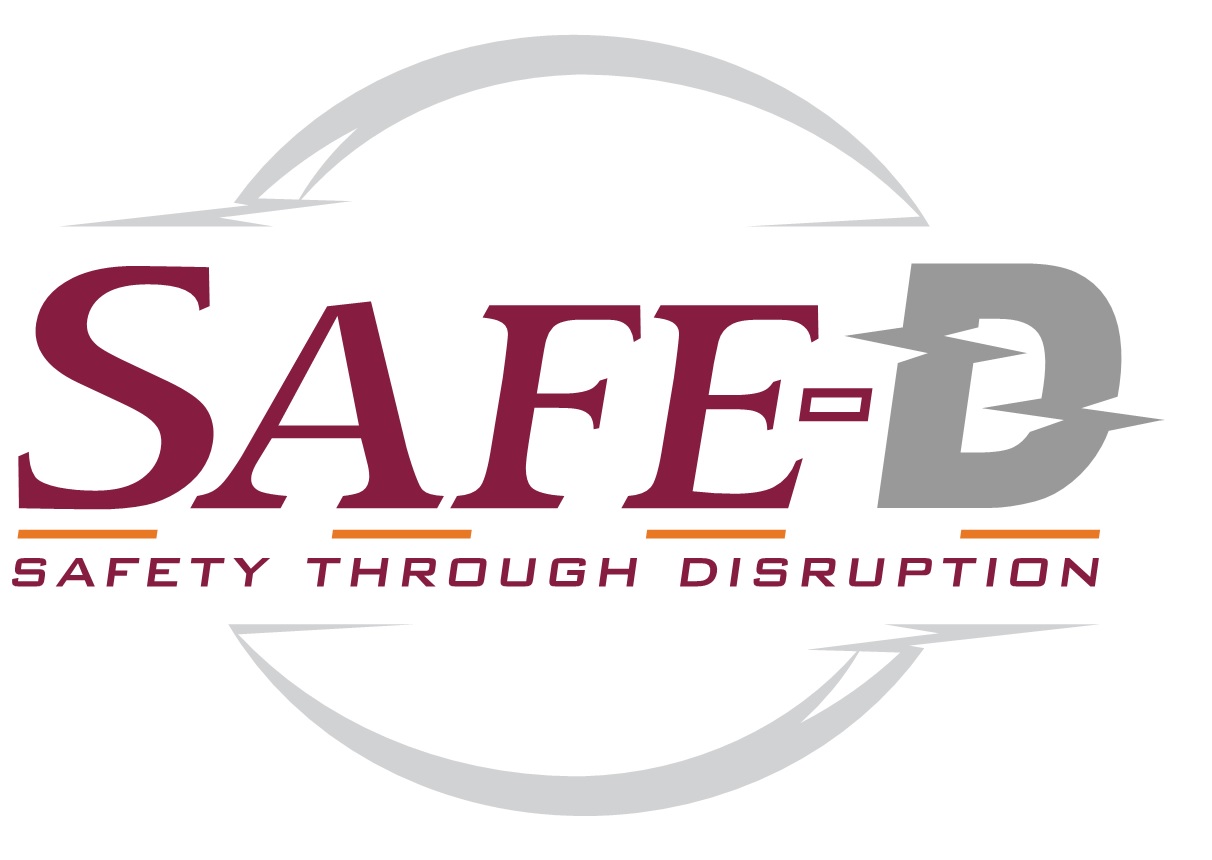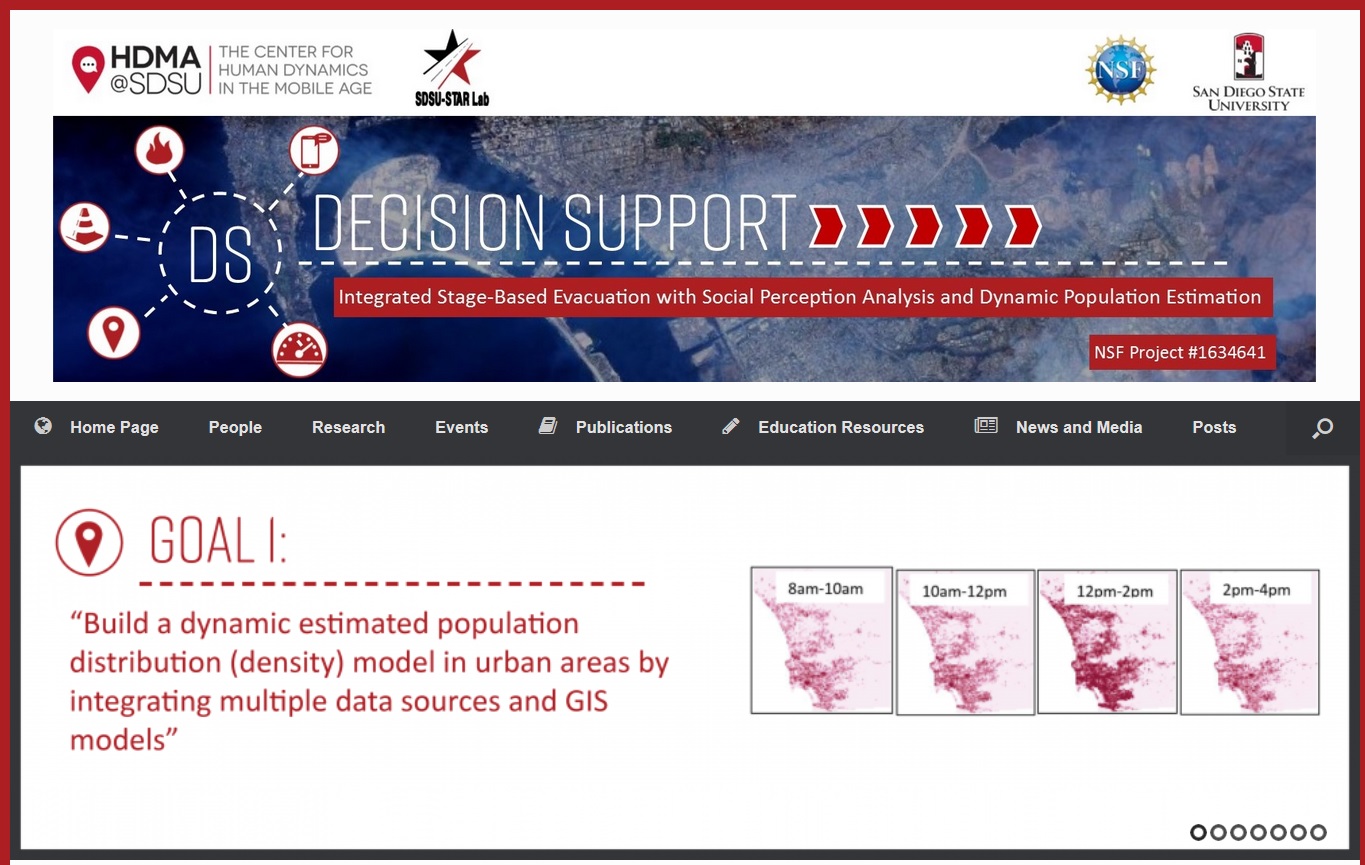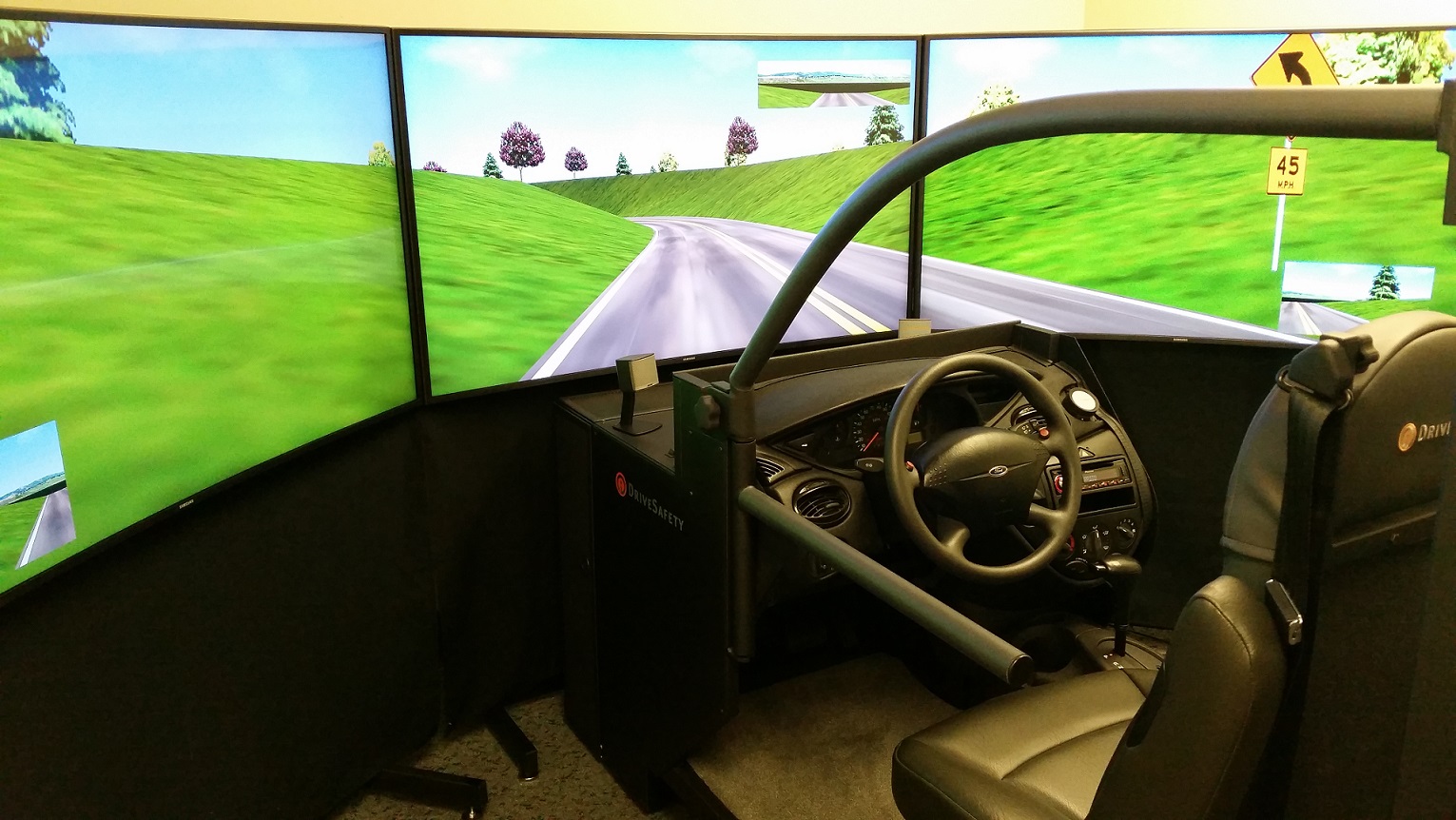

Nov 2016 - Present
Funded by Department of Transportation (DOT)
Role: Associate Director (SDSU Director), San Diego State University (SDSU)
The Safety through Disruption (SafeD) University Transportation Center (UTC) endeavors to maximize the potential safety benefits of disruptive technologies through targeted research that addresses the most pressing transportation safety questions. The consortium is a unique partnership between Virginia Tech Transportation Institute (VTTI), Texas Transportation Institute (TTI), and San Diego State University (SDSU), who have teamed with the common belief that our transportation system is poised for an evolutionary leap. We are excited about this transformation in surface transportation and view disruption as an opportunity to profoundly improve the safety of the nation's transportation system and its users. The SafeD center will make progress towards this vision through a combination of research, education, and technology transfer activities.
Jun 2017 - Dec 2017
Funded by SafeD University Transportation Center
Role: SDSU Principal Investigator (PI), San Diego State University (SDSU)
This project addresses the emerging field of behavior-based predictive safety analytics, where the general goal is to predict the involvement in road crashes based on individual driver behavior characteristics. This has a range of applications in the areas of fleet safety management and usage-based insurance, but may also be used to evaluate the potential safety benefits of automated driving systems. A particular focus in the project is to explore the possibilities of using large sets of naturalistic crash and behavior data collected as part of commercial fleet- and behavior change management programs, collecting tens of thousands of crashes annually. Since this data is subject to legal, ethical and business-related constraints, an important activity in the project is to discuss with relevant stakeholders how barriers in using this data for academic research can be overcome. Moreover, a state-of-the-art review will be conducted and a conceptual framework for relating behavior to crash causation/risk developed. Based on this, a proof-of-concept demonstration of how crash involvement may be predicted on the basis of individual driver behavior will be performed, utilizing an available naturalistic dataset of sufficient size. Finally, a curriculum for undergraduate and graduate studies on behavior-based predictive safety analytics will be developed along with material for a graduate-level course on the topic. The present project is designed as an eight-month pilot initiative with the objective to provide the basis for a future more comprehensive research effort.
Sep 2016 - Sep 2019
Funded by SafeD University Transportation Center
Role: SDSU Principal Investigator (PI), San Diego State University (SDSU)
The goal of the current work is to develop training protocol guidelines that can be used by automated vehicle trainers to optimize overall system use and transportation safety. This will be accomplished by first developing a taxonomy of the knowledge and skills required to operate NHTSA L2 and L3 automated vehicles. Two human subjects-based evaluations of "human factors" issues relative to automation and training will then be conducted using the taxonomy to inform the selection of study variables. The first study will compare three training programs on knowledge and driving skill for NHTSA level 2 and 3 automation in both low and high-risk driving scenarios in a driving simulation environment. Based on these results, an "in situ" training program will be developed and tested on the VTTI Smart Road, to assess whether drivers can be trained to use L2 and L3 systems while driving these vehicles.

Sep 2016 - Sep 2019
Funded by National Science Foundation (NSF)
Role: Co-Principal Investigator (Co-PI), San Diego State University (SDSU)
The research will help emergency response agencies better understand public perceptions and needs during disaster events, and create more effective evacuation plans for local communities. This project will integrate multiple data sources-including social media, census survey, geographic information systems (GIS) data layers, volunteer suggestions, and remote sensing data-to develop an integrated wildfire evacuation decision support system (IWEDSS) for the County of San Diego as a demonstration prototype system. IWEDSS will consist of four core modules: dynamic population estimation, stage-based robust evacuation models, social perception analysis, and a web-based geospatial analytics platform. It will offer scientifically-based and data-driven analytic tools for evacuation planers, resource managers, and decision makers to support efficient and effective decision-making activities that can reduce the evacuation time and potential number of injuries and deaths. The research team will collaborate with staff from the Office of Emergency Services (OES) of San Diego County, the San Diego/Imperial Counties Chapter of the American Red Cross, and 2-1-1 San Diego to develop IWEDSS together.

Jan 2016 - Jun 2017
Funded by UGP, SDSU
Role: Principal Investigator (PI), San Diego State University (SDSU)
Driver errors and presence of curvature are recognized as two important factors increasing chances of the crashes. Emerging connected vehicle (CV) technology has introduced instrumental application of vehicle-to-vehicle (V2V) and vehicle-to-infrastructure (V2I) communications to help drivers avoid errors in the first place. This project will focus on the human factors aspect of one of the V2I safety applications, curve speed warning (CSW). A driving simulator study of the driver response to CSW at horizontal curves will be conducted. Different scenarios related to CSW systems will be carefully designed in the simulator environment to evaluate driver behavior with respect to various type of CSW systems. Data will be collected on drivers' speed, acceleration, response time, etc. through the data collection system of the driving simulator. The results of this study is relevant to better design of CSW systems, and potentially could reduce number of crashes, and save lives.
Jan 2015 - Jun 2015
Funded by TOYOTA
Role: Research Associate, Center for Infrastructure Based Safety Systems, Virginia Tech Transportation Institute (VTTI)
Jan 2015 - Jun 2015
Funded by U.S. Department of Justice
Role: Research Associate, Center for Infrastructure Based Safety Systems, Virginia Tech Transportation Institute (VTTI)
May 2013 - Jun 2015
Funded by VDOT
Role: Graduate Research Assistant, Center for Infrastructure Based Safety Systems, Virginia Tech Transportation Institute (VTTI)
Dec 2012 - Jun 2015
Funded by the National Surface Transportation Safety Center for Excellence (STSCE)
Role: Graduate Research Assistant, Center for Infrastructure Based Safety Systems, Virginia Tech Transportation Institute (VTTI)
Nov 2013 - Dec 2014
Funded by VDOT
Role: Graduate Research Assistant, Signal Control & Operation Research and Education Systems Lab, Virginia Tech
Jun 2012 - Dec 2013
Funded by Mid-Atlantic Universities Transportation Center
Role: Graduate Research Assistant, Signal Control & Operation Research and Education Systems Lab, Virginia Tech
Oct 2010 - Apr 2012
Funded by the Virginia Transportation Research Council, VDOT
Role: Graduate Research Assistant, Northern Virginia Center, Virginia Tech
Jul 2010 - Jun 2011
Funded by VT/ Center for Community Security and Resilience, a partnership between Virginia Tech, IBM Research, Arlington County VA
Role: Graduate Research Assistant, Northern Virginia Center, Virginia Tech